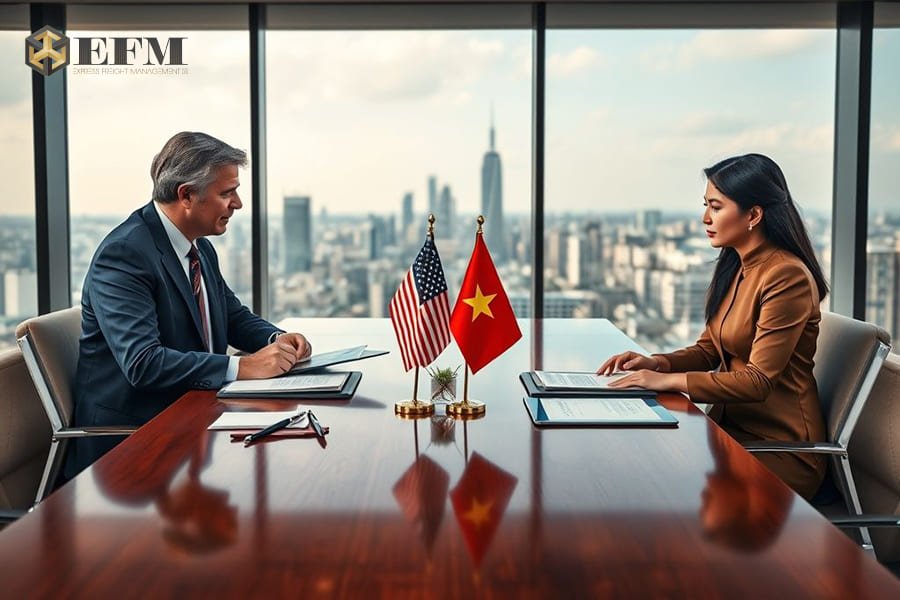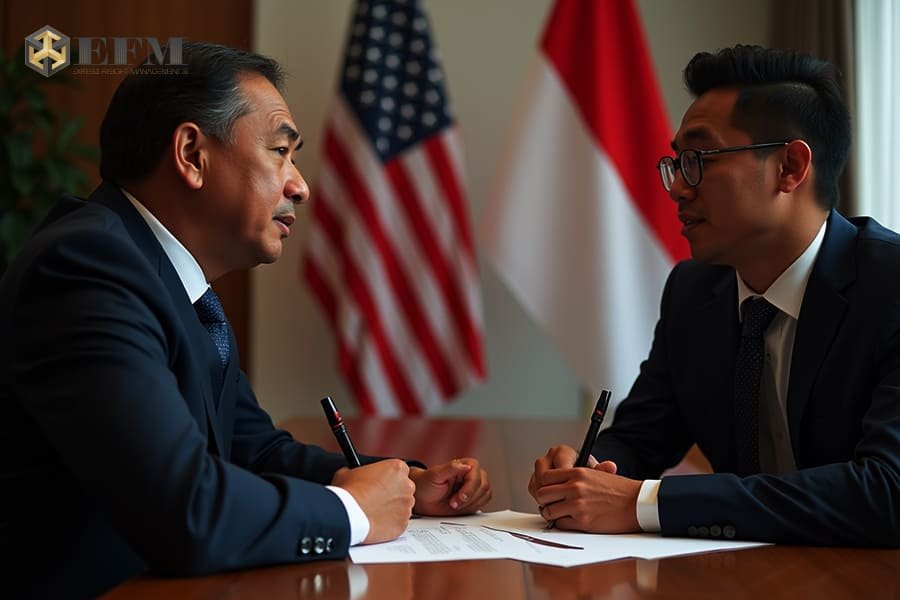US, Vietnam Reach Trade Deal

A new trade agreement between the US and Vietnam brings stability to a key Asian supply chain. The deal, announced July 2, 2025, averts a threatened 46% tariff and establishes a predictable framework for trade.
Further Reading: Understanding Trump’s Reciprocal Tariff Plan
For logistics professionals, this agreement directly impacts costs and compliance. Understanding the details is essential. This guide breaks down the new Vietnam tariffs structure. We will explain the critical trans-shipment rule and provide a clear, actionable plan.
New Tariffs
The framework establishes a new baseline for the landed cost of goods from Vietnam. It is built on three key figures:
- A 20% tariff on many US-bound imports from Vietnam.
- A 40% penalty tariff on all trans-shipped goods.
- A 0% tariff for US exports entering Vietnam.
For importers, the 20% rate is a significant relief. However, the 40% penalty on trans-shipments introduces a major new compliance risk.
The Trans-shipment Rule
Importers will find the new rule on trans-shipments the most critical part of the deal. In order to avoid tariffs, companies would previously route foreign goods through Vietnam. Said goods would undergo only minor changes and relabeled “Made in Vietnam”.
This loophole is closing. Vietnamese imports are now subjected to strict inspection to verify substantial transformation. Here, the burden of proof falls entirely on the importer. Clear documentation is now a necessity to verify your shipment’s origin. This includes factory production records and a detailed Bill of Materials. Failure to do so can result in the dreaded 40% penalty tariff, a hefty blow to profitability.
Impact
This agreement solidifies Vietnam’s role as a cornerstone of modern supply chain strategy. For example, the certainty of a predictable 20% tariff creates stability. Said stability facilitates long-term sourcing, financial planning, and strategic decision making.
For Vietnam, it ensures it remains competitive with other nations in the ASEAN bloc. This strengthens Vietnam’s position as a top “China Plus One” manufacturing destination.
It is the third trade agreement reached by the US, after United Kingdom and China. More could follow, as countries rush to secure deals before the July 9 deadline for renegotiation. For companies looking to import from other ASEAN countries (such as Singapore or Malaysia), Vietnam now serves as an example.
Action Plan For Importers
Success in this new trade environment requires businesses to act quickly and deliberately.
- Update Landed Cost Models:
- The first step is to adjust all financial planning, pricing, and budgeting to reflect the new 20% tariff on your Vietnamese imports.
- Audit Your Vietnam Operations:
- Conduct a thorough review of your suppliers and their manufacturing processes. You must verify that their operations meet the “substantial transformation” standard. This is the legal requirement for claiming a product is “Made in Vietnam.”
- Secure Your Documentation:
- Proactive documentation is your primary defense against costly penalties. You must have a clear process for getting and storing records from your factory partners. These documents are your proof of compliance if U.S. Customs challenges a shipment.
Conclusion
The US-Vietnam trade deal marks a significant shift for the US-ASEAN supply chain. It provides welcome stability with a predictable tariff. However, it also introduces serious compliance risks through the new trans-shipment rule. Success in this new environment depends on careful planning, diligent auditing, and robust documentation.
Navigating these changes can be complex. As your logistics partner, we are here to provide the expertise needed to ensure your supply chain is not only compliant but also resilient and cost-effective.
Streamline your logistics with Express Freight Management – your trusted partner for seamless global shipping solutions. As your dedicated ASEAN freight forwarder, we can integrate these new tariff requirements directly into our door-to-door logistics service. This covers the standard sea freight and air freight, as well as our international courier services. With expert knowledge, advanced technology, and a commitment to reliability, we provide seamless logistics management between the United States and Brunei, Cambodia, Indonesia, Laos, Malaysia, Myanmar, Philippines, Singapore, Thailand, and Vietnam. This helps you focus on what matters most—growing your business.




